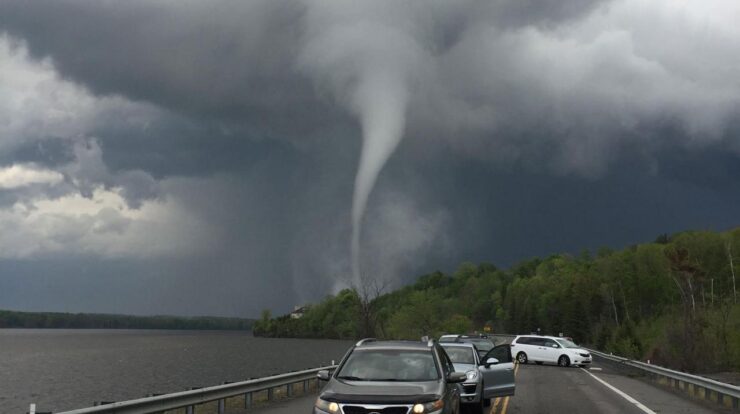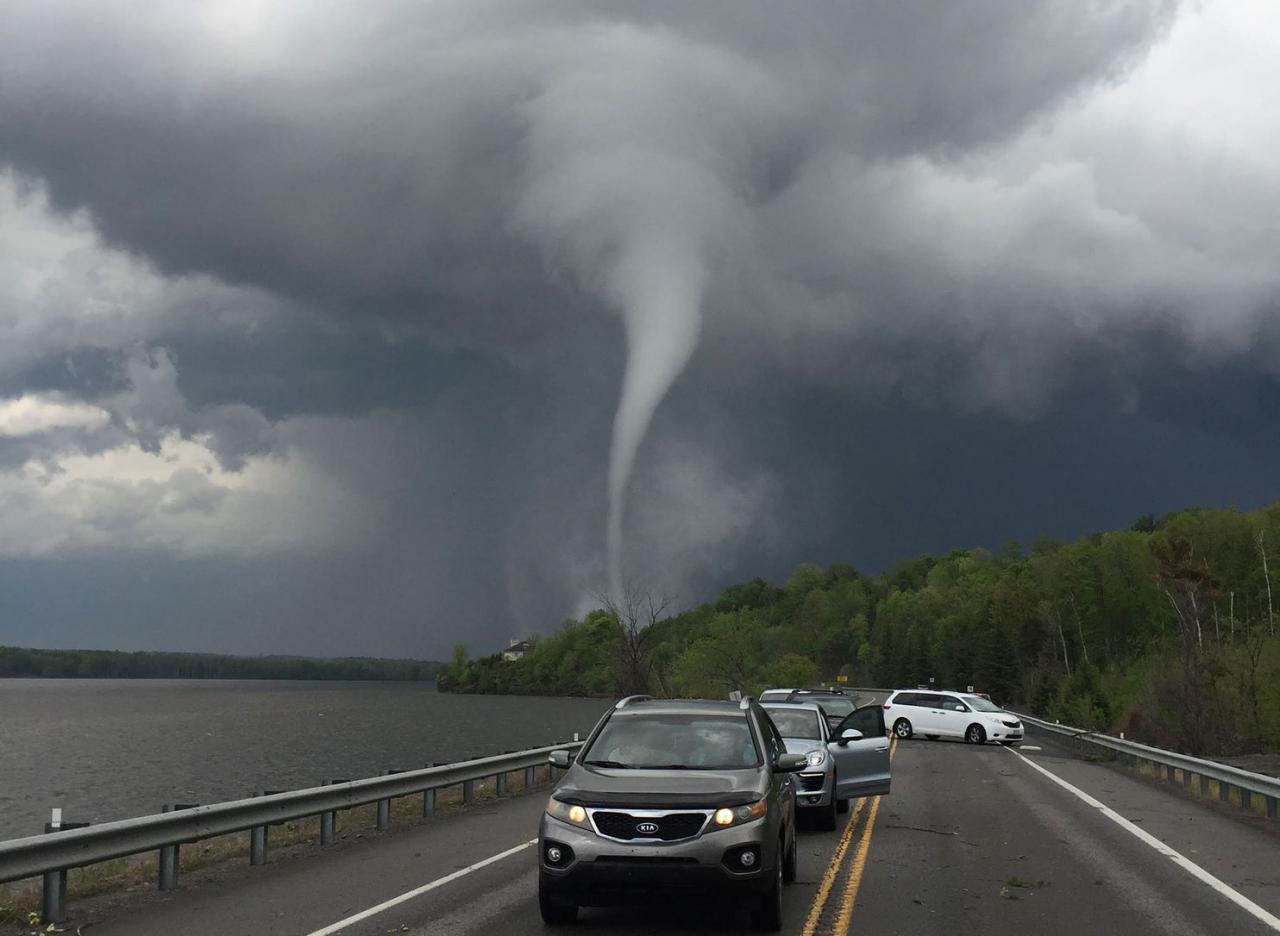
Tornadoes Today: A comprehensive guide to understanding, forecasting, and staying safe during these powerful weather events.
As tornadoes today become increasingly common, it is crucial to equip ourselves with the knowledge and tools necessary to navigate their unpredictable nature. This article delves into the science behind tornado formation, the latest forecasting techniques, and essential safety measures to protect life and property.
Tornado Formation and Characteristics
Tornadoes are violent rotating columns of air that extend from the base of a thunderstorm cloud to the ground. They form when warm, moist air from the Gulf of Mexico meets cold, dry air from the north. The warm air rises rapidly, creating an updraft that spins and intensifies as it draws in more air.
The spinning air forms a funnel cloud, which can become a tornado if it touches the ground.Tornadoes come in a variety of shapes and sizes. Some are tall and narrow, while others are short and wide. They can travel at speeds of up to 70 miles per hour and can cause widespread damage.
The most powerful tornadoes are rated EF5 on the Enhanced Fujita Scale, which means they can cause complete destruction.
Tornado Forecasting and Tracking

Forecasting tornadoes is a challenging task, but meteorologists have made significant progress in recent years. Weather radar is the primary tool used to detect tornadoes. Radar can track the movement of storms and identify areas where tornadoes are likely to form.In
addition to radar, meteorologists also use other technologies to track tornadoes. These technologies include:* Satellite imagery
- Lightning detection systems
- Doppler radar
- Spotter networks
The National Weather Service issues tornado warnings when there is a risk of a tornado forming. Tornado warnings are typically issued for areas within a 10-mile radius of a tornado.
Tornado Safety and Preparedness
If you are in an area where tornadoes are common, it is important to have a plan in place to stay safe. The best way to protect yourself from a tornado is to take shelter in a sturdy building. If you are outside when a tornado warning is issued, find a low-lying area and lie down flat.Here
are some additional tips for staying safe during a tornado:* Stay away from windows and doors.
- Go to the lowest level of your building and find an interior room.
- Cover your body with blankets or pillows.
- If you are in a car, pull over and park. Get out of the car and lie down in a ditch or other low-lying area.
Tornado Impact and Recovery: Tornadoes Today
Tornadoes can cause widespread damage and loss of life. The most common injuries caused by tornadoes are blunt force trauma, lacerations, and fractures. Tornadoes can also cause damage to infrastructure, such as buildings, bridges, and power lines.The aftermath of a tornado can be devastating.
Emergency responders and recovery workers often have to work around the clock to clear debris, restore power, and provide aid to victims.
Tornado Research and Mitigation
Scientists are constantly working to learn more about tornadoes and how to mitigate their impact. One of the most important areas of research is focused on improving tornado forecasting. Meteorologists are working to develop new technologies that can detect tornadoes earlier and more accurately.Another
important area of research is focused on developing new ways to mitigate the impact of tornadoes. Engineers are working to design buildings that are more resistant to tornadoes. They are also developing new technologies that can be used to protect people from tornadoes, such as tornado shelters and warning systems.
Final Summary
Tornadoes today pose a significant threat to communities worldwide. By understanding their formation, improving forecasting capabilities, and implementing effective safety measures, we can mitigate their impact and safeguard our well-being. Ongoing research and technological advancements hold promise for further reducing tornado-related damage and saving lives.
Questions and Answers
What are the warning signs of a tornado?
Dark, rotating clouds, funnel clouds, and loud roaring sounds are common warning signs of an approaching tornado.
What is the safest place to be during a tornado?
The safest place to be during a tornado is in an underground shelter, such as a basement or storm cellar. If an underground shelter is not available, seek refuge in a sturdy building with no windows and go to the lowest level possible.
How can I stay informed about tornado warnings?
Stay tuned to local weather forecasts and have multiple ways to receive alerts, such as weather apps, NOAA weather radio, or local news stations.




